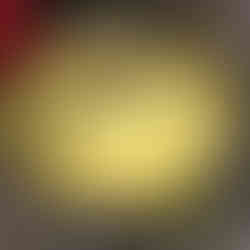This second pastry class was a group class with three other women. We just fit into the kitchen. The plan for the afternoon was to make a Tarte Tropézienne (St. Tropez Tart), an Ambassadeur (Ambassador Cake), and a Forêt Noire (Black Forest Cake).
As in the previous class we moved between different parts of the three recipes: prepping, baking, cooling, assembling, etc.
Tarte Tropézienne (St. Tropez Tart)
This is not really a tart, but a giant brioche bun filled with a pastry cream and topped with "sucre en graine" or pearl sugar. It was created in 1955 by a Alexandre Micka, a pâtisserie owner in St. Tropez. The pastry was named by actress Brigitte Bardot while she was there filming And God Created Woman.
Brioche is a type of bread, enriched with eggs, butter, and milk, giving it a rich, tender crumb. In a bakery it comes in many forms—as a braided loaf, as rolls, etc. The brioche we made was about 6-7 inches in diameter, so yes, a large bun.
Since the brioche dough needs time to proof, we started the class by making the dough. It mixes up easily in a mixer and after about 10 minutes of mixing with the dough hook, the dough is ready to be pressed into cake circles. The dough is brushed with an egg wash and sprinkled generously with pearl sugar, a sugar that does not melt in the oven and stays white throughout the baking process. It gives a very nice crunch to the brioche. While the brioche proofed and then baked we made the filling.
The filling is called "crème diplomate", which is a combination of pastry cream and whipped cream. This cream filling is the basis for many French pastries.
The brioche baked up nicely. It gets sliced in half, filled with lots of the "crème diplomate" and then the topped with the other half of the brioche. Sprinkled with powdered sugar, the "tarte" or cake is done.

This is not a super sweet treat because the brioche is only lightly sweetened and the cream filling does not have a lot of sugar in it either. Sweetness comes from the crunchy sugar on top, a nice contrast to the tender brioche and the silky cream filling.
La Forêt Noire (Black Forest Cake)
The pastry shop is named after this cake and it's version is made with raspberries.
Like many French pastries, they consist of layering cake and a type of cream. The same is true for this cake. This cake is called a "génoise", a basic sponge cake base made of eggs, sugar, flour, and cocoa powder. To create the thin layer, you spread it out on a sheet pan and bake it for a very short time (6-8 minutes) at a high temperature. With a cake circle, the cake is cut out and the layering begins.
Cake + "crème chantilly"—sweetened whipped cream + raspberries + more whipped cream + cake + chocolate whipped cream + cake + more cream. The cream can be flavored with kirsch, if desired.
The exterior is covered in chocolate sprinkles and the top is decorated with "copeaux de chocolat"—chocolate shavings of whatever size you like. These are very large!


I was very pleased with how this cake looked when sliced. Again, the cake is not overly sweet and the tartness of the raspberries provide a great balance to the cream in the cake.
Ambassadeur (Ambassador's Cake)
This is a classic French cake made with a "génoise" cake, filled with pastry cream and candied fruit, and covered with almond paste.
Like the Black Forest Cake, the "génoise" cake here is made without the addition of cocoa powder. Spread into a thin layer and baked at a high temperature, the cake, when cooled, is cut into the shape of the cake circle. This cake takes two cake layers. When assembling the cake, the layers can be soaked with a sugar syrup, flavored with a liqueur.
The filling is a "crème diplomate" that was also used in our first recipe, the St. Tropez Tart. The difference here is that candied fruit is added to the cream filling. The second cake layer covers the filling, followed by a thin layer of cream.
The circle lifts off quite easily. Traditionally, the almond paste is light green. Rolled out, the almond paste is fitted over the cake and then decorated. The "Joyeux Anniversaire"—Happy Birthday, was for my husband, who celebrated his birthday on this day.
This was probably the sweetest dessert of the three because of the almond paste. I'm not a big fan of candied fruit, but I was pleasantly surprised by the cake's texture and flavor. I really liked it! You can certainly make your own candied fruit and choose the fruit you want.
I am finding these classes to be so interesting, especially just learning the basics of classic French pastry. All the pastries I see are starting to make sense to me.



























































Comments